Jingzhou Chen
MinerU2.5: A Decoupled Vision-Language Model for Efficient High-Resolution Document Parsing
Sep 26, 2025Abstract:We introduce MinerU2.5, a 1.2B-parameter document parsing vision-language model that achieves state-of-the-art recognition accuracy while maintaining exceptional computational efficiency. Our approach employs a coarse-to-fine, two-stage parsing strategy that decouples global layout analysis from local content recognition. In the first stage, the model performs efficient layout analysis on downsampled images to identify structural elements, circumventing the computational overhead of processing high-resolution inputs. In the second stage, guided by the global layout, it performs targeted content recognition on native-resolution crops extracted from the original image, preserving fine-grained details in dense text, complex formulas, and tables. To support this strategy, we developed a comprehensive data engine that generates diverse, large-scale training corpora for both pretraining and fine-tuning. Ultimately, MinerU2.5 demonstrates strong document parsing ability, achieving state-of-the-art performance on multiple benchmarks, surpassing both general-purpose and domain-specific models across various recognition tasks, while maintaining significantly lower computational overhead.
FUSION: Fully Integration of Vision-Language Representations for Deep Cross-Modal Understanding
Apr 14, 2025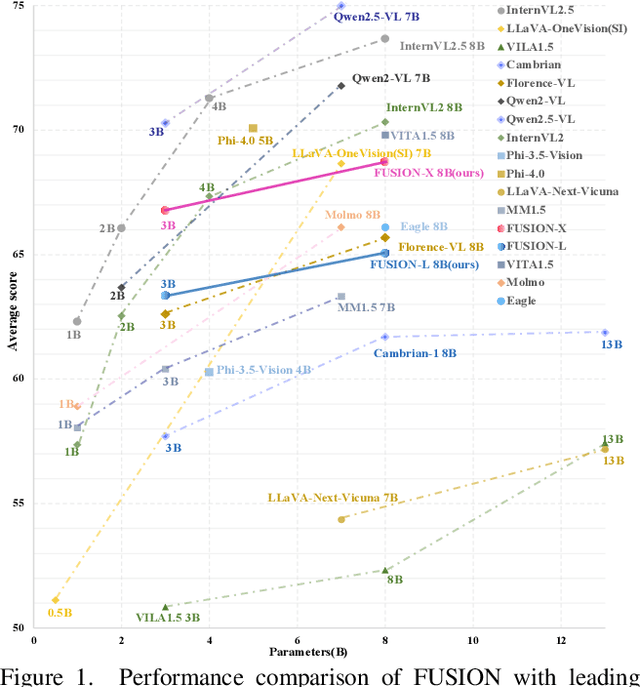
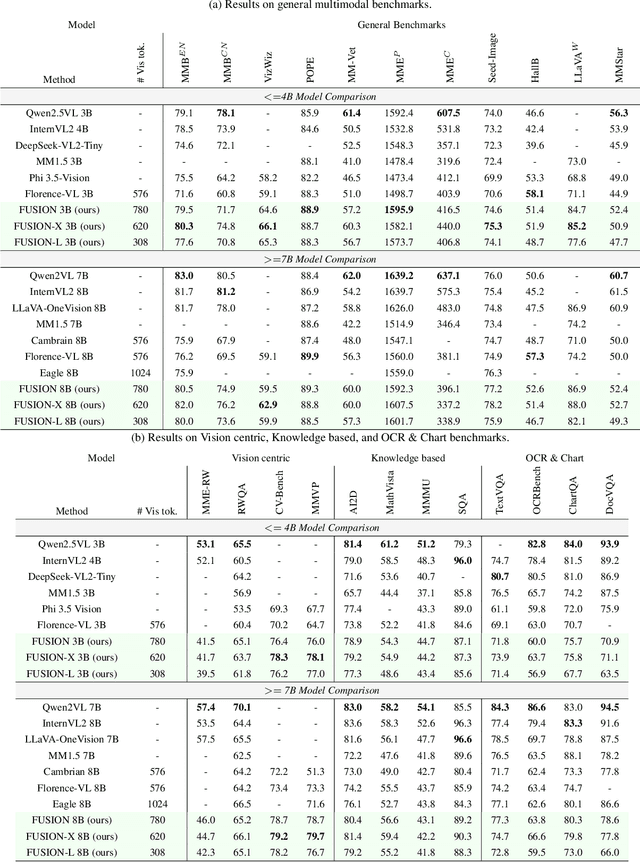
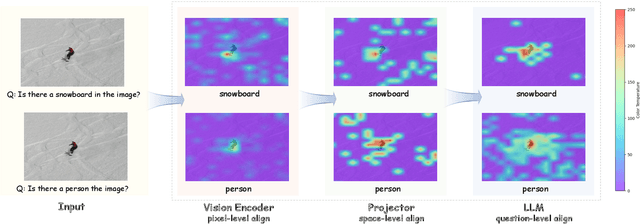

Abstract:We introduce FUSION, a family of multimodal large language models (MLLMs) with a fully vision-language alignment and integration paradigm. Unlike existing methods that primarily rely on late-stage modality interaction during LLM decoding, our approach achieves deep, dynamic integration throughout the entire processing pipeline. To this end, we propose Text-Guided Unified Vision Encoding, incorporating textual information in vision encoding to achieve pixel-level integration. We further design Context-Aware Recursive Alignment Decoding that recursively aggregates visual features conditioned on textual context during decoding, enabling fine-grained, question-level semantic integration. To guide feature mapping and mitigate modality discrepancies, we develop Dual-Supervised Semantic Mapping Loss. Additionally, we construct a Synthesized Language-Driven Question-Answer (QA) dataset through a new data synthesis method, prioritizing high-quality QA pairs to optimize text-guided feature integration. Building on these foundations, we train FUSION at two scales-3B, 8B-and demonstrate that our full-modality integration approach significantly outperforms existing methods with only 630 vision tokens. Notably, FUSION 3B surpasses Cambrian-1 8B and Florence-VL 8B on most benchmarks. FUSION 3B continues to outperform Cambrian-1 8B even when limited to 300 vision tokens. Our ablation studies show that FUSION outperforms LLaVA-NeXT on over half of the benchmarks under same configuration without dynamic resolution, highlighting the effectiveness of our approach. We release our code, model weights, and dataset. https://github.com/starriver030515/FUSION
Semantic Guided Level-Category Hybrid Prediction Network for Hierarchical Image Classification
Nov 22, 2022

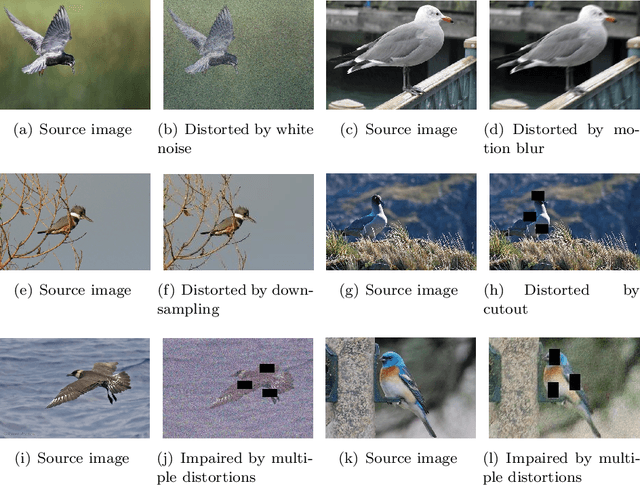

Abstract:Hierarchical classification (HC) assigns each object with multiple labels organized into a hierarchical structure. The existing deep learning based HC methods usually predict an instance starting from the root node until a leaf node is reached. However, in the real world, images interfered by noise, occlusion, blur, or low resolution may not provide sufficient information for the classification at subordinate levels. To address this issue, we propose a novel semantic guided level-category hybrid prediction network (SGLCHPN) that can jointly perform the level and category prediction in an end-to-end manner. SGLCHPN comprises two modules: a visual transformer that extracts feature vectors from the input images, and a semantic guided cross-attention module that uses categories word embeddings as queries to guide learning category-specific representations. In order to evaluate the proposed method, we construct two new datasets in which images are at a broad range of quality and thus are labeled to different levels (depths) in the hierarchy according to their individual quality. Experimental results demonstrate the effectiveness of our proposed HC method.
Label Relation Graphs Enhanced Hierarchical Residual Network for Hierarchical Multi-Granularity Classification
Jan 11, 2022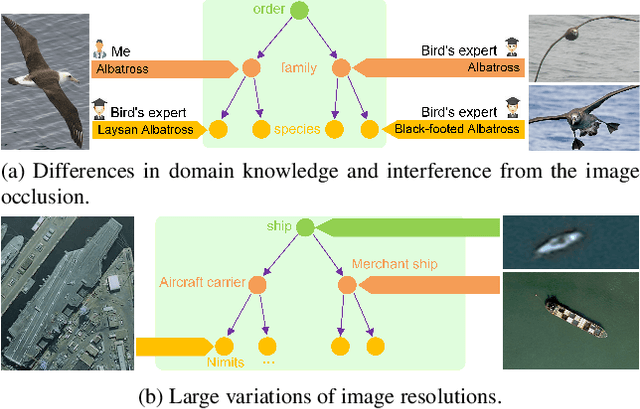
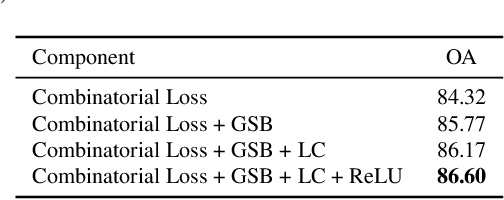

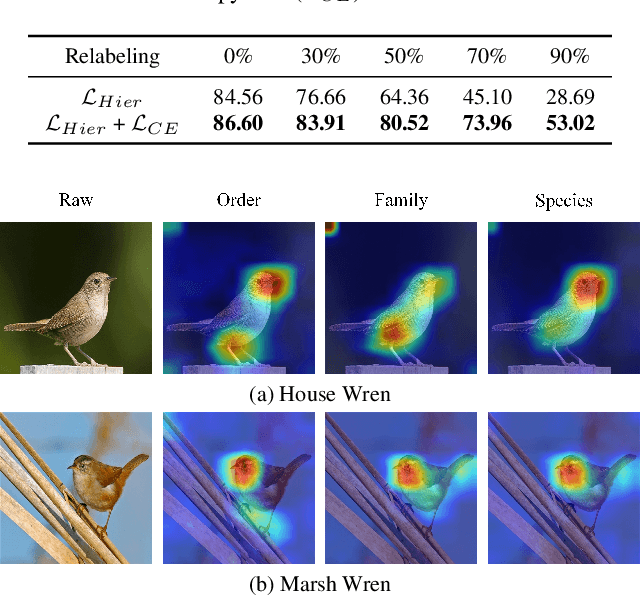
Abstract:Hierarchical multi-granularity classification (HMC) assigns hierarchical multi-granularity labels to each object and focuses on encoding the label hierarchy, e.g., ["Albatross", "Laysan Albatross"] from coarse-to-fine levels. However, the definition of what is fine-grained is subjective, and the image quality may affect the identification. Thus, samples could be observed at any level of the hierarchy, e.g., ["Albatross"] or ["Albatross", "Laysan Albatross"], and examples discerned at coarse categories are often neglected in the conventional setting of HMC. In this paper, we study the HMC problem in which objects are labeled at any level of the hierarchy. The essential designs of the proposed method are derived from two motivations: (1) learning with objects labeled at various levels should transfer hierarchical knowledge between levels; (2) lower-level classes should inherit attributes related to upper-level superclasses. The proposed combinatorial loss maximizes the marginal probability of the observed ground truth label by aggregating information from related labels defined in the tree hierarchy. If the observed label is at the leaf level, the combinatorial loss further imposes the multi-class cross-entropy loss to increase the weight of fine-grained classification loss. Considering the hierarchical feature interaction, we propose a hierarchical residual network (HRN), in which granularity-specific features from parent levels acting as residual connections are added to features of children levels. Experiments on three commonly used datasets demonstrate the effectiveness of our approach compared to the state-of-the-art HMC approaches and fine-grained visual classification (FGVC) methods exploiting the label hierarchy.
Deep Neural Network Based Hyperspectral Pixel Classification With Factorized Spectral-Spatial Feature Representation
Apr 16, 2019
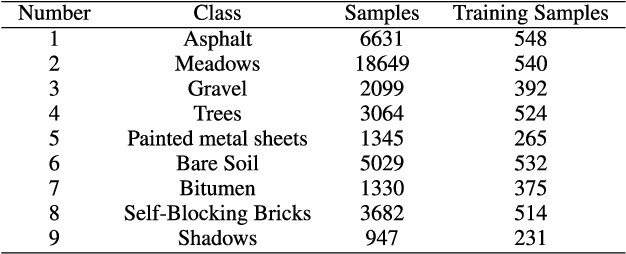

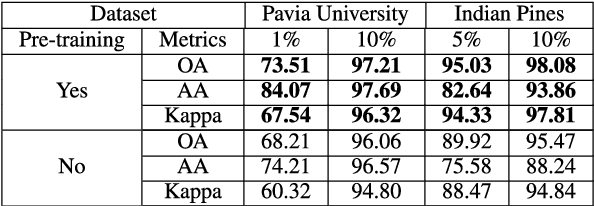
Abstract:Deep learning has been widely used for hyperspectral pixel classification due to its ability of generating deep feature representation. However, how to construct an efficient and powerful network suitable for hyperspectral data is still under exploration. In this paper, a novel neural network model is designed for taking full advantage of the spectral-spatial structure of hyperspectral data. Firstly, we extract pixel-based intrinsic features from rich yet redundant spectral bands by a subnetwork with supervised pre-training scheme. Secondly, in order to utilize the local spatial correlation among pixels, we share the previous subnetwork as a spectral feature extractor for each pixel in a patch of image, after which the spectral features of all pixels in a patch are combined and feeded into the subsequent classification subnetwork. Finally, the whole network is further fine-tuned to improve its classification performance. Specially, the spectral-spatial factorization scheme is applied in our model architecture, making the network size and the number of parameters great less than the existing spectral-spatial deep networks for hyperspectral image classification. Experiments on the hyperspectral data sets show that, compared with some state-of-art deep learning methods, our method achieves better classification results while having smaller network size and less parameters.
 Add to Chrome
Add to Chrome Add to Firefox
Add to Firefox Add to Edge
Add to Edge